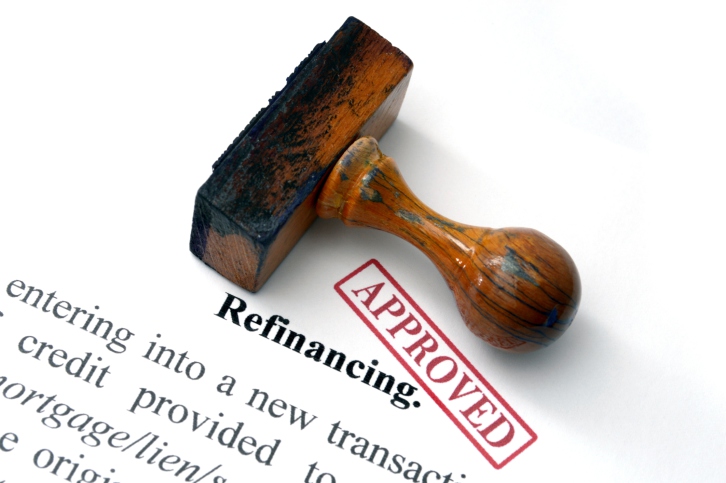What’s Ahead For Mortgage Rates This Week – August 31, 2020
 Last week’s economic news included readings from Case-Shiller Home Price Indices, along with data on new and pending home sales. Weekly readings on mortgage rates and new and continuing jobless claims were also published.
Last week’s economic news included readings from Case-Shiller Home Price Indices, along with data on new and pending home sales. Weekly readings on mortgage rates and new and continuing jobless claims were also published.
Case-Shiller: Home Price GrowthHolds Steady in June
National home prices grew at a seasonally-adjusted annual pace of 4.30 percent in June, which was unchanged from May’s year-over-year growth rate for home prices. The 20-City Home Price Index rose by 3.50 percent year-over-year in June.
Phoenix, Arizona reported the leading year-over-year home price growth rate of 9.00 percent. Seattle, Washington held second place with a year-over-year home price growth rate of 6.50 percent. Home prices in Tampa, Florida grew at a year-over-year pace of 5.90 percent.
Home price growth rates rose in five of 19 cities reported in the 20-City Index; the Wayne County Michigan metro area did not report for June’s 20-City Home Price Index.
New Home Sales Rise as Pending Home Sales Dip in July
Sales of new homes rose for the third consecutive month in July according to the U.S. Census Bureau. July’s reading of 901,000 new homes sold on a seasonally adjusted annual basis was the highest pace of sales since 2006. Sales of new homes were 36 percent higher year-over-year. Slim inventories of pre-owned homes for sale and low mortgage rates boosted new home sales, but analysts said that builders also face headwinds including higher materials costs and affordability.
Pending home sales dropped in July from June’s year-over-year reading of 15.80 percent to July’s reading of 5.80 percent. Ongoing concerns over COVID-19, high unemployment rates and, concerns over jobs have caused would-be-homebuyers to delay their home purchase plans.
Mortgage Rates, Jobless Claims Fall
Freddie Mac reported lower rates for fixed-rate mortgages last week with the average rate for 30-year fixed-rate mortgages falling by eight basis points to 2.91 percent. The average rate for 15-year fixed-rate mortgages also fell by eight basis points to 2.46 percent. Rates for 5/1 adjustable rate mortgages averaged 2.91 percent and were unchanged from the prior week.
New jobless claims fell to 1.01 million claims filed from the prior week’s reading of 1.10 million initial claims filed. Continuing jobless claims were also lower with 14.54 million continuing claims filed as compared to the previous week’s reading of 14.76 million continuing jobless claims filed.
What’s Ahead
This week’s scheduled economic reports include readings on construction spending, private and public sector jobs growth, and the national unemployment rate. Weekly reports on mortgage rates and jobless claims will also be released.

 For those who live in a condo, they know that there are numerous advantages that come with this living arrangement. Living in a condo means that other people are going to be responsible for landscaping and common areas while homeowners are still able to build equity in the home.
For those who live in a condo, they know that there are numerous advantages that come with this living arrangement. Living in a condo means that other people are going to be responsible for landscaping and common areas while homeowners are still able to build equity in the home. Refinancing your existing mortgage may provide you with the opportunity to lower your interest rate, reduce your mortgage payment and adjust your loan term. For those homeowners who have lived in their home for more than a few years, pulling equity out of the property for everything from a luxurious vacation to making home improvements is a tempting potential benefit.
Refinancing your existing mortgage may provide you with the opportunity to lower your interest rate, reduce your mortgage payment and adjust your loan term. For those homeowners who have lived in their home for more than a few years, pulling equity out of the property for everything from a luxurious vacation to making home improvements is a tempting potential benefit. According to the National Case-Shiller Home Price Index for June, U.S. home prices rose 4.30 percent year-over-year, which was unchanged from May’s year-over-year home price growth rate. Home prices are expected to continue growing through 2020 as businesses reopen and COVID-19 restrictions ease.
According to the National Case-Shiller Home Price Index for June, U.S. home prices rose 4.30 percent year-over-year, which was unchanged from May’s year-over-year home price growth rate. Home prices are expected to continue growing through 2020 as businesses reopen and COVID-19 restrictions ease. If you’re moving from a large home into a smaller house or condo, you’re probably looking forward to enjoying a lower utility bill and not having to do as much cleaning. But before you move, you’ll want to take certain precautions to ensure that you’re not overwhelmed.
If you’re moving from a large home into a smaller house or condo, you’re probably looking forward to enjoying a lower utility bill and not having to do as much cleaning. But before you move, you’ll want to take certain precautions to ensure that you’re not overwhelmed.